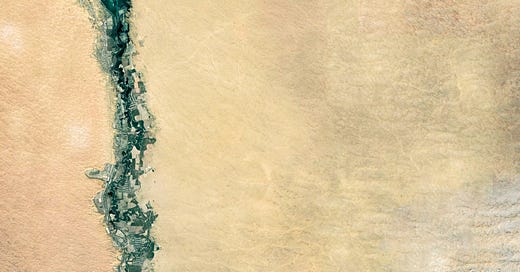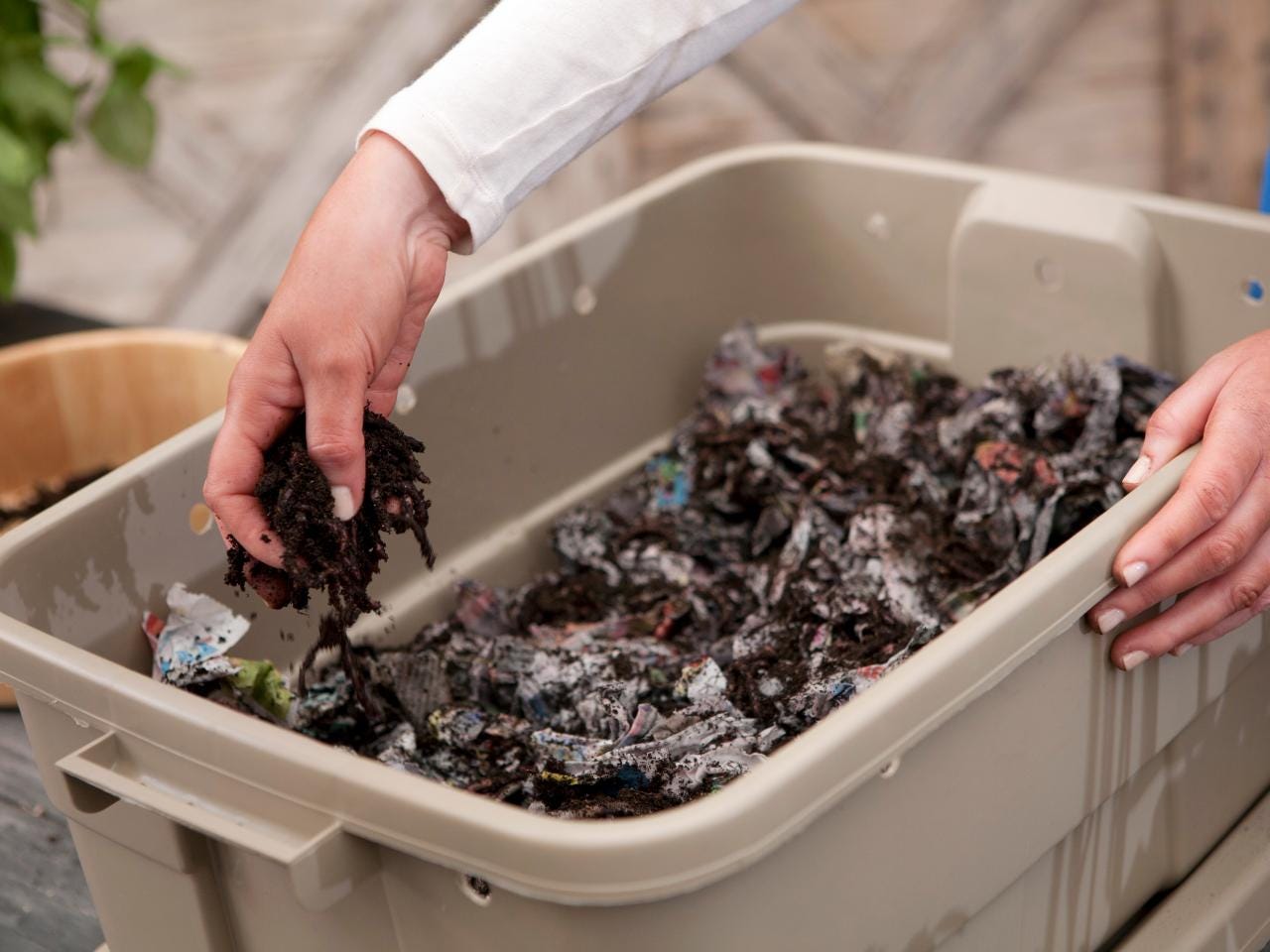Be a Backyard Naturalist | Issue #23
Inspire curiosity and get up close to the natural world in your own backyard
Placeful is a weekly newsletter exploring sense of place, sustainability, and the actions we can take to more deeply engage with our communities and wild spaces. Each week covers a new topic. To learn more about the “why” behind Placeful, start here.
It’s getting to the time of year when people are thinking about their outdoor spaces. Garden plans are being finalized, seed packets ordered, the days are getting longer, and the yard projects some of us have been dreaming up are beginning to feel closer to reality.
Our backyards, front yards, and shared public green spaces are all places where we can practice our naturalist (or bioregionalist) skills. With some intentional additions, these spaces can inspire and strengthen our connection with the natural world, stoking curiosity at any age.
Kids especially benefit from opportunities to interact with the nature in their own backyard or neighborhood. Children benefit developmentally from experiences with the natural world, but these experiences don’t have to be far from home to matter.
Today I want to talk about a few ways that we can make our own backyards into places where we can observe the natural world in many different forms. Please forgive me for creating this listicle of sorts, but here are four fun things you can add to your outdoor space to inspire curiosity and support your commitment to placefulness. Let’s dig in!
Backyard naturalist starter kit
Rain Gauge
Cheating a little bit with this one since naturalists technically only study living things, but I still think rain gauges and other weather station-type additions to your backyard should be included in this discussion.
Growing up around farmers, I probably knew more people with a rain gauge on their property than not. The way I remember, trading rainfall measures with neighbors and family members happened all the time, as common a topic of conversation as, well, the weather.
For those of us whose livelihoods are not tied to rainfall or other weather conditions, a rain gauge is one inexpensive thing that we can add to our outdoor spaces that provides a simple connection to the meteorology of our place and time.
For kids (or adults!), a rain gauge is one way to make learning about weather fun and participatory. It provides ample opportunity for setting up science experiments; for example, curious kiddos can compare rainfall in different months, how much rain falls in a short, intense burst of rain versus a slow, day-long drizzle, how much is needed before the grass turns from yellow to green, and so on. A rain gauge is just a start for exploring the wide world of meteorology, microclimates, and—thinking interdisciplinarily—practicing numerical and measurement skills.
Animal Feeder
In my mind, nothing blurs the connection between natural spaces and human spaces more than a bird feeder. As I child, I thought everybody’s grandmas and grandpas had birdfeeders because almost all of mine did. From the window of my grandparents’ living room, I would watch all the species that came along to feed, and my grandpa would point them out by name. To this day, goldfinches are one of the few songbirds I can recognize because they were introduced to me at such a young age.
For kids, observing a bird feeder is a great opportunity to learn about bird behaviors and relationships. How do different bird species interact with each other? Which birds prefer which types of seeds? What sounds do different birds make, and when do they make them? Kids are naturally curious about the natural world, and bird feeders provide a space for them to observe birds (reasonably) up close and for a longer stretch of time.
There are so many kinds of birdfeeders, and many options when it comes to seed and suet as well. If you’re interested in adding a birdfeeder to your outdoor space, it’s always good to do a little research and see what types of birds live in your area, what type of feed they like, and the type of bird feeder that they like best. This All About Birds post is a good starting point for learning about types of bird feeds you can buy.
Animal Nest Box
If you are worried about squirrels getting into a birdfeeder, or if you don’t think you’re likely to replenish bird feed regularly (I get it), a bird house is a good option. Again, check to see which size or type would be most beneficial for your region. The birdhouse pictured above can be attached to a window, which might be a good fit for anyone living in a home or apartment with no yard—as long as those suction cups are really strong!
Bird houses are also a great introductory woodworking project for youth and adults alike. I love the idea of building one because it feels more personal, but if you don’t have the time or tools, there are many folks over at Etsy who’ve made some beautiful homes for all different kinds of birdies.
My grandpa once cut all of the pieces to make a bird house, pre-drilled all of the holes, provided paint and everything and shipped it to me in South Dakota. It was one way he could continue sharing his love of birds with me even after we moved farther apart. I loved that project, and was extremely excited (though perplexed) when a fairly large bird pecked at the opening until he could fit through it and moved in.
Bat boxes are another potential addition. Though some people might find the idea of inviting bats to live in their yard a bit spooky, these critters are highly important to our ecosystem. As a bonus, they can help control mosquitos and some even act as pollinators. Bat boxes provide a safe environment for bats to raise their pups, and if you didn’t know that baby bats are called pups, I hope this helps put them in a more positive light!
Compost system
Like we teach students at my job with a garden-based education organization, compost is COOL! Composting is a way to divert biodegradable materials from the landfill and put nutrients back into the soil.
Almost anyone can begin composting, even without a yard. Compost systems come in at all different price points, but in my opinion, simple low-cost systems are just as effective as more aesthetic, pricier options. At work, we just have four wire cages and a pitchfork, and we turn the piles every two weeks or so.
We also have a vermicomposting system, which is really fun for the kids—they can feed the worms food scraps or shredded paper and watch over time as they are processed by the worms. Our vermicompost system is just in a smallish plastic tote, the kind you would use to store stuff under your bed.
Whichever compost systems sounds appealing to you, it’s a great way to observe micro- and macro-organisms working together to break down organic materials, and to participate in the caretaking of our land and soils. If you were the kid who liked to play with worms (on rainy days, I liked to pick them up from the sidewalk and move them to safety), vermicomposting is a fun option.
Nature is everywhere, including your yard
There are so many ways to turn our outdoor spaces into inviting homes for birds, experimentation stations for curious minds, and places to connect with the natural systems at work around us—and I’ve only really scratched the surface. Vegetable gardening and native landscaping are other ways to practice placefulness in our backyards, and I look forward to exploring these topics in further issues.
Not everyone has the privilege of living in a home with a yard. Many of us simply don’t have access to a private, outdoor space (thinking now of my college friend and her windowless 2nd floor apartment). If this more closely resembles your situation, I hope you gleaned something from this issue that you can take with you into the future, or can find a way to incorporate them into your home—like vermicomposting, or window nest boxes.
Practicing placefulness looks like many things, but sometimes setting an intention and following through with a tangible project—like installing a bird feeder—can feel really great. Wishing you luck with any backyard naturalist projects you might take on this season.
Take care,
Emily
A quick announcement
I’ve made the decision to switch to a biweekly publishing schedule for Placeful.
As it gets closer to spring, I’m realizing that in order to practice many of the skills and ideals I write about, I need to spend a little less time in front of the computer. Much of my full-time job is spent online too, which kind of compounds the issue. Annnd I also want to leave time for camping and other fun weekend adventures with my partner; my weekly publishing schedule has been constricting for both him and myself in that regard.
All that being said, I look forward to popping into your inbox again on February 27th <3
Placeful Practice
Consider what you might add to your outdoor space—whatever that means to you—to hone your backyard naturalist skills, then make a plan and make it happen!
How do you like to interact with nature near your home? What natural phenomena were you fascinated by as a child? Have a favorite bird feeder to recommend? Join the conversation by leaving a comment!
Placeful is a weekly email newsletter containing personal reflections and reporting on sense of place and sustainability. Each week I delve into a new topic, wrapping it up with an action item that will help readers foster deeper connections to the natural, cultural, built, and historic environments around them. Read more about Placeful.
To find a web version of this issue, click here. Know someone who would appreciate the topics I’m writing about? Please share! If you’d like, you can follow me on Twitter (@emily_ann_again) or Instagram (@emily.a.roberson). My inbox is always open at placeful.emily@gmail.com. And lastly, if someone forwarded this to you, subscribe below to receive future issues straight to your inbox. Thanks for reading <3











